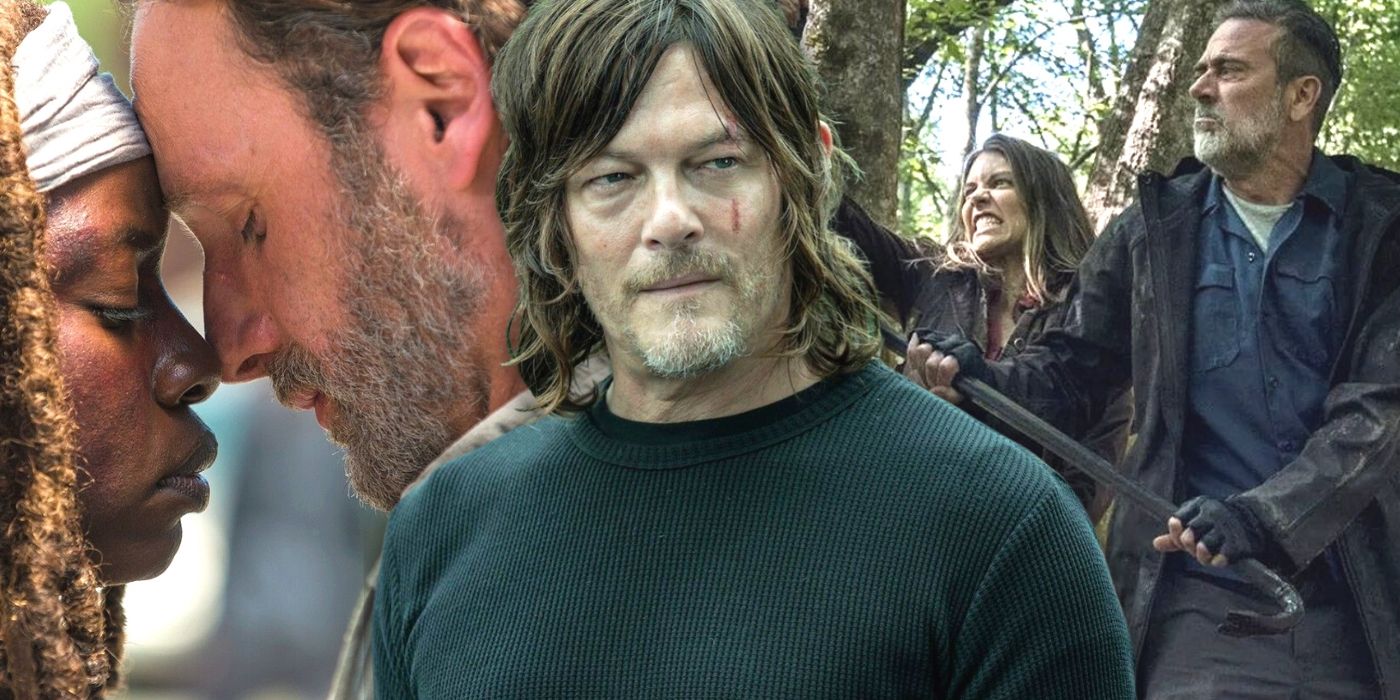The Walking Dead Timeline Decoded: A Comprehensive Guide to All Seven Shows
The Walking Dead franchise, born from Robert Kirkman’s comic books, has grown from a single AMC series into a sprawling universe of seven interconnected shows, each chronicling different facets of a zombie apocalypse. With the main series concluding in 2022 after 11 seasons and spinoffs like The Walking Dead: Daryl Dixon, Dead City, and The Ones Who Live expanding the narrative, fans have been piecing together the intricate timeline that spans over a decade of survival, loss, and hope. Understanding when each show takes place is key to appreciating the franchise’s depth and interconnectedness. Let’s break down the timeline of all seven Walking Dead shows, explore their place in the apocalypse, and uncover why this chronology captivates fans.

The Walking Dead Universe: A Snapshot
Since its debut in 2010, The Walking Dead has redefined post-apocalyptic storytelling, blending gritty survival with human drama. The main series follows Rick Grimes and his group as they navigate a world overrun by walkers, facing threats like the Governor, Negan, and the Whisperers. Its success—peaking at 17 million viewers in Season 5—spawned six spinoffs: Fear the Walking Dead, The Walking Dead: World Beyond, Tales of the Walking Dead, The Walking Dead: Dead City, The Walking Dead: Daryl Dixon, and The Walking Dead: The Ones Who Live. Each show explores different characters, locations, and time periods, creating a rich tapestry that spans from the apocalypse’s outset to over a decade later.
The timeline, rooted in the main series’ progression, is measured in days, months, and years since the Wildfire Virus outbreak, which began in August 2010 in the show’s universe. While the comics provide a loose framework, the TV franchise adjusts dates for narrative flexibility, with spinoffs filling gaps and extending the story. Fans have meticulously mapped this chronology through clues like character ages, seasonal changes, and explicit references, making it a puzzle that enhances the viewing experience. Below, we outline when each show takes place, weaving together their overlapping and sequential events.
The Walking Dead (2010–2022): The Core Timeline
The Walking Dead serves as the backbone, spanning roughly 12 years from the outbreak in August 2010 to around 2022. The show begins with Rick Grimes waking from a coma in Atlanta, approximately 60 days after the outbreak (October 2010). Season 1 covers days 60–70, as Rick joins survivors like Glenn, Daryl, and Shane at a quarry camp. Seasons 2–3, set at Hershel’s farm and the prison, span late 2010 to mid-2011, with Lori’s pregnancy (Judith’s birth) anchoring the timeline at about 300 days post-outbreak.
Seasons 4–6, including the Terminus arc and the group’s arrival in Alexandria, cover 2011–2012, roughly 500–600 days post-outbreak. Negan’s introduction in Season 6’s finale (April 2012) and the Savior war in Seasons 7–8 occur in 2012–2013, with a time jump in Season 8 showing Carl’s death and Rick’s victory over Negan around day 800. Season 9 introduces a six-year jump to 2019, post-Rick’s presumed death, with Judith now a child. Seasons 10–11, involving the Whisperers and Commonwealth, span 2019–2022, ending with the Commonwealth’s reformation and a one-year jump to 2023, where an older Judith and RJ hint at a hopeful future.
This 12-year arc, covering days 60 to approximately 4,500 post-outbreak, provides the anchor for all spinoffs, with key events like Rick’s helicopter abduction (2018) and Negan’s imprisonment (2013–2019) tying into other shows.
Fear the Walking Dead (2015–2023): The Apocalypse’s Dawn
Fear the Walking Dead, the first spinoff, explores the outbreak’s early days, making it the chronological starting point. Set in Los Angeles, it begins on day 1 (August 2010), as the Clark family—Madison, Nick, and Alicia—witnesses society’s collapse. Season 1 covers days 1–20, showing the virus’s spread before Rick wakes up. Seasons 2–3, set in Mexico and a ranch, span late 2010 to early 2011 (days 20–100), overlapping with The Walking Dead’s Season 1.
A major time jump in Season 4 aligns Fear with The Walking Dead’s later seasons, moving to 2013–2014 (days 800–1,200) after Morgan crosses over from the main series. Seasons 5–8, involving a nuclear fallout and PADRE, extend to 2017–2021, with a seven-year jump in Season 7 placing Alicia’s final arc around day 3,800. Fear’s timeline, spanning days 1 to 4,000, bridges the outbreak’s chaos to the main series’ established communities, offering a ground-level view of the apocalypse’s progression.
The Walking Dead: World Beyond (2020–2021): A Decade In
World Beyond, a two-season spinoff, is set 10 years post-outbreak, around 2020 (days 3,650–3,800). Focusing on young survivors like Hope and Iris in a Nebraska campus, it explores the Civic Republic Military (CRM), a shadowy group tied to Rick’s disappearance. The show runs concurrently with The Walking Dead’s Season 10, with references to the Whisperer war placing it in late 2019 to early 2020. Its epilogue, set years later (circa 2025), introduces variant zombies, hinting at future threats. World Beyond’s tight timeline provides a snapshot of the apocalypse’s later stages, connecting to Daryl Dixon and The Ones Who Live via the CRM.
Tales of the Walking Dead (2022): A Time-Hopping Anthology
Tales of the Walking Dead, a six-episode anthology, jumps across the timeline, with each episode set at different points. Episode 1, featuring Alpha’s backstory, occurs pre-outbreak and in 2011 (day 300). Others span 2012–2018, with stories like Dee’s (pre-Whisperer) tying to The Walking Dead’s Seasons 3–9. The anthology’s flexibility fills timeline gaps, offering standalone tales that enrich the universe without a fixed chronological anchor.
The Walking Dead: Dead City (2023–Present): Post-Series Struggles
Dead City, starring Maggie and Negan, is set roughly 2–3 years after The Walking Dead’s finale, around 2024–2025 (days 4,800–5,000). The show follows Maggie’s mission to rescue her son Hershel in a zombie-infested Manhattan, with Negan as her uneasy ally. References to the Commonwealth’s stability and Negan’s post-prison life place it post-2023, aligning with The Walking Dead’s epilogue. Season 2, in production, will likely continue in 2025, extending the timeline slightly. Dead City’s urban setting and focus on redemption make it a direct sequel to the main series’ endgame.
The Walking Dead: Daryl Dixon (2023–Present): A Global Shift
Daryl Dixon, set in France, occurs around 2023–2024 (days 4,500–4,800), shortly before or concurrent with Dead City. Daryl’s journey begins after The Walking Dead’s finale, with Season 1 showing him washing ashore post-Commonwealth. Season 2, The Book of Carol, confirms Carol’s search for Daryl in 2023, with flashbacks tying to the main series’ end. The show’s European setting and “burner” zombies introduce new timeline elements, with Season 3 (filming in Spain) likely advancing to 2025. Daryl Dixon’s placement reflects the franchise’s expansion into a global apocalypse.
The Walking Dead: The Ones Who Live (2024): Rick’s Return
The Ones Who Live, focusing on Rick and Michonne, spans 2018–2023 (days 3,000–4,500). It begins with Rick’s CRM captivity in 2018, post-helicopter abduction (The Walking Dead Season 9), and tracks his and Michonne’s reunion in 2022–2023, overlapping with The Walking Dead’s final season and Daryl Dixon’s start. The finale, showing their return to Alexandria, aligns with 2023, just before Dead City. The show fills critical gaps, detailing Rick’s lost years and tying into World Beyond’s CRM arc.
Why the Timeline Matters
The Walking Dead timeline fascinates fans because it creates a cohesive narrative across seven shows, rewarding attentive viewers with interconnected details. For example, Rick’s CRM abduction in The Walking Dead links to World Beyond and The Ones Who Live, while Morgan’s crossover from The Walking Dead to Fear ties their timelines. Spinoffs like Daryl Dixon and Dead City extend the story beyond the main series, showing how survivors adapt years after the outbreak. Fans on social media have mapped these connections, creating detailed chronologies that enhance the franchise’s depth.
The timeline also reflects the apocalypse’s evolution. Fear captures the chaotic early days, The Walking Dead charts community-building, and spinoffs like Daryl Dixon explore global impacts. Variant zombies, introduced in World Beyond and Daryl Dixon, hint at new threats, keeping the universe dynamic. Streaming on Netflix (main series, Fear, The Ones Who Live) and AMC+ (Daryl Dixon, Dead City) ensures accessibility, fueling fan engagement.
The Franchise’s Enduring Appeal
The Walking Dead’s timeline captivates because it mirrors real-world resilience, showing how humanity rebuilds amid chaos. Each show’s distinct timeframe—Fear’s raw panic, World Beyond’s youthful hope, Dead City’s gritty survival—offers varied perspectives, appealing to diverse audiences. The franchise’s inclusivity, with queer characters and global settings, keeps it modern, while its themes of redemption and community resonate in uncertain times.
Despite criticisms of narrative fatigue—viewership fell to 3 million by the main series’ end—spinoffs have revitalized the universe. Daryl Dixon’s 81% Rotten Tomatoes score and Dead City’s renewal reflect strong interest, with Season 3 of Daryl Dixon and More Tales in development. The timeline’s complexity, far from daunting, invites fans to explore, making it a testament to the franchise’s storytelling ambition.
Why Everyone’s Talking About the Timeline
The Walking Dead timeline is a puzzle that rewards fans with a deeper understanding of its universe, from the outbreak’s first days to a hopeful 2025. Jeffrey Dean Morgan’s continued passion for Negan in Dead City and Norman Reedus’ reinvention of Daryl in France highlight the franchise’s ability to evolve while honoring its roots. Whether you’re a longtime viewer or new to the spinoffs, the timeline offers a roadmap to a saga that’s as sprawling as it is intimate. Stream the shows on Netflix or AMC+, dive into the chronology, and join the fans unraveling a decade of survival—one walker at a time.





